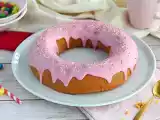Everything you need to know to make royal icing and decorate your Christmas cookies and desserts like a professional

Christmas is just around the corner, and with it comes sweet moments of culinary creativity. One of the greatest pleasures of the season is decorating Christmas cookies with a perfect royal icing: a technique that transforms simple cookies into edible works of art. Royal icing, known for its smooth texture when applied and its hard, crunchy finish, is the ideal ally to add a magical touch to your holiday desserts. In this article, you will discover how to prepare it successfully and learn all the tricks you need to become a master decorator. Let's get to work!
What is royal icing?
Royal icing is a coating prepared from two main ingredients: icing sugar and egg white. When whipped together, they produce a thick, glossy mixture that hardens as it dries, leaving a firm, crisp finish. Its versatility makes it perfect for decorating cookies, brownies, donuts, cakes and other desserts, allowing you to create detailed and professional designs.
How to prepare a perfect royal icing
Basic and optional ingredients:
- Powdered sugar: It is essential to use commercial icing sugar, since its texture is much thinner and more uniform than that obtained at home.
- Egg white: It can be fresh, pasteurized or in powder form (albumin).
- Optional: Food coloring, vanilla or lemon essence to add flavor, and cream of tartar to stabilize.
Approximate quantities: 10 g albumin powder + 70 g cold water + 375 g powdered sugar.
Basic steps:
Add the egg whites to the bowl of the pastry blender. 2.
2. Beat the egg whites on medium-low speed until foamy, about 1 minute.
3. Slowly add the sifted icing sugar (and vanilla essence if desired).
4. When everything is fully incorporated, increase the speed to medium-high and beat until stiff, glossy peaks form.
5. Divide the frosting into small bowls to tint (if desired) with different food coloring.
6. Transfer to piping bag and decorate cookies or dessert of your choice.
Types of consistency according to use
- Consistency for outlining: The mixture should form soft peaks. When the piping bag is lifted, the peak should bend rather than remain stiff.
- Filling consistency: It should be a little more fluid than the previous one. So, from the base mixture add cold water little by little, one spoonful at a time, until you get a fluid texture that spreads easily.
Expert tips and tricks
You can use albumin or pasteurized egg whites: You will reduce the risk of food contamination and achieve a more homogeneous texture.
Cream of tartar: This stabilizer helps to maintain the firmness of the glaze for a longer period of time.
Choose the right nozzle: Number 2 round nozzles are ideal for fine details and number 4 nozzles are ideal for filling and creating thicker details. Although this is a matter of taste. The best thing to do is to try.
Decorate cold cookies: Make sure the cookies are completely cold before decorating them to prevent the icing from melting.
Create layers: If you want to add relief, wait until each layer of icing is completely dry before applying the next one.
Storage: Store decorated cookies in a cool, dry place. Closed cellophane bags are ideal to maintain freshness for up to one month.
Food safety: avoid risks when using raw eggs
Although the risk is low, raw egg whites may contain Salmonella. To avoid problems:
Pasteurized whites: use pasteurized liquid egg whites, available in most supermarkets.
Meringue powder or albumin: These dehydrated products are safe and provide excellent results.
The art of decorating: technique and patience
Royal icing takes practice, patience and an artistic touch. The key is to spend time perfecting your technique and experimenting with different tools and designs. Let your creativity run wild and surprise everyone with your sweet holiday decorations! You can put yourself to the test with some of these recipes below.

Cinnamon star cookies, the christmas classic

Donut cake (giant xxl donut)

Lemon brownies

Gingerbread men cookies

Comments